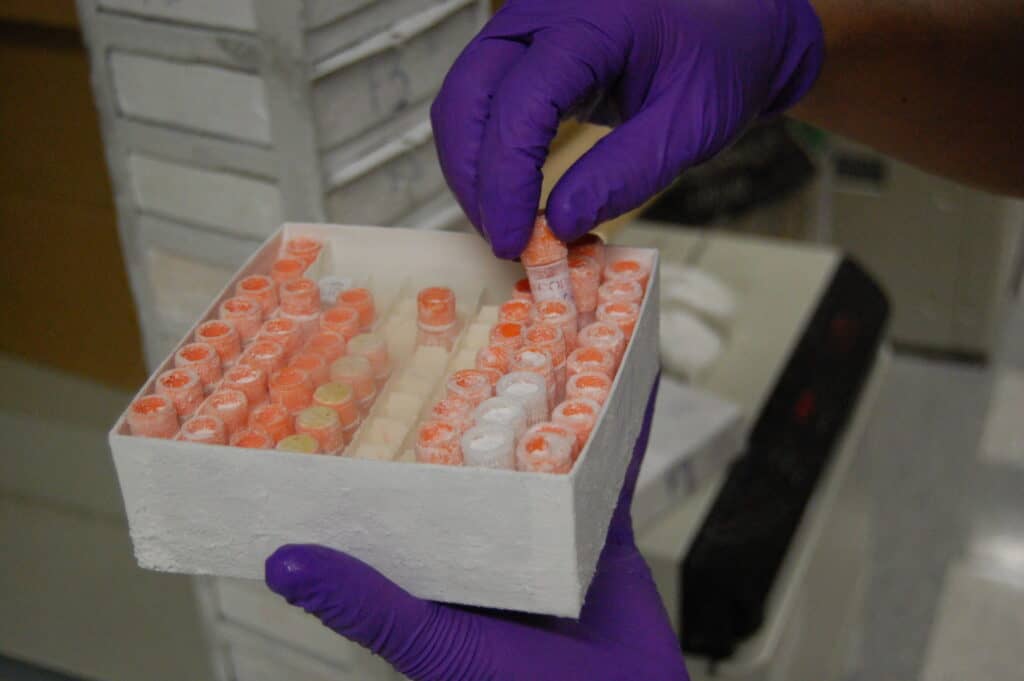
The recent occupation of a Sudanese national health lab housing dangerous pathogens like polio shows how quickly political violence can generate “huge biological risk.”
Sudan’s capital Khartoum is currently embroiled in violence related to a struggle for power between its military and paramilitary leaders. One of the groups – currently unidentified – took over the lab as a military base and evicted the technicians. Together with a lack of working generators, this has created a high-biohazard risk situation that the World Health Organization described as “extremely, extremely dangerous.”
This lab in Khartoum is not the only one in a politically unstable region that may be housing dangerous pathogens, and in the process of looking for novel viruses among wildlife, US government-supported programs like PREDICT can contribute to collections of biological samples that may pose a risk to human health.
Though the Khartoum lab was not a PREDICT partner, the current situation raises questions about biosecurity for research done in areas that may be at-risk for violence.
Unfortunately, the possibility of unrest may be overlooked in biosecurity protocols governing the management and storage of biological samples left behind when projects like PREDICT end, according to documents obtained by U.S. Right to Know.
PREDICT was a $200 million, 10-year program funded by USAID whose goal was to find novel viruses before they sparked outbreaks in humans. The program ended in 2019, and was succeeded by DEEP VZN, a 5-year, $125 million project with similar goals.
USAID is reviewing the biosecurity risks of DEEP VZN after receiving appeals to halt the project from the White House National Security Council and the Office of Science and Technology Policy, according to the Washington Post.
The documents obtained by U.S. Right to Know show that the virus hunters trekked through politically unstable areas in pursuit of pandemic-potential pathogens.
As PREDICT concluded in 2019, over 600,000 human and animal samples remained in up to 28 different countries. Many of these countries, such as Ethiopia, Rwanda, the Democratic Republic of Congo, and Cameroon have experienced recent war, political violence or unrest.
An unknown number of these samples could contain live virus. Several PREDICT animal sampling protocols suggest that about half were chemically inactivated. The other half were stored in virus-transport media (VTM), which can preserve a virus until it can be amplified or cultured in a lab.
USAID and U.C. Davis did not respond to questions about whether all viral samples were inactivated or destroyed at the end of the project.
Some of the viruses detected by PREDICT include Marburg and Ebola, which have fatality rates ranging from 23 to 90 percent. The virulence and pathogenicity of most novel viruses discovered by PREDICT in humans is unknown.
PREDICT planned to “securely and appropriately” store samples in host countries before the project wrapped up. Labs lacking appropriate conditions arranged to transfer their samples to more “secure” locations, and livestock samples in Guinea were going to be destroyed.
Documents suggest that ultra-low temperature freezers containing PREDICT samples were locked “with very limited key access at all times.” However, other methods of securely storing the samples are not described in the documents.
Most of PREDICT’s biosafety protocols do not consider violence or civil unrest. PREDICT’s Emergency Preparedness manual does list “coup, riot, political uprising” as a potential hazard. Instead of providing specific guidelines, the manual states that “field teams should reach a consensus on appropriate measures to take and plan accordingly.”
A semi-annual 2018 PREDICT report shows that conflicts in several countries interfered with PREDICT’s work, and underscores the biohazard risk that they can pose.
In Ethiopia, widespread political unrest hampered viral surveillance efforts.
“Significant political turmoil and instability in the country, with pockets of civil unrest have made travel and accessing project sites difficult for the team, yet they have managed to continue to sample wildlife,” the report reads.
In Sierra Leone, safety concerns surrounding national and district elections restricted field work, and may have contributed to delaying the public announcement of a newly discovered ebolavirus.
The report states that a region in Tanzania was “affected by a constant influx of refugees (some of them armed) from DR Congo and Burundi” as well as smuggling. This generated safety concerns that limited the accessibility of sampling sites.
The report also documented “local violence and civil protests” that restricted virus hunters’ work in Bangladesh following the conviction of a political leader.
According to the report, PREDICT took precautions to ensure the safety of their teams. However, no mention is made regarding the security of biological samples or labs in the event of violence.
“When lab work is conducted in unstable countries, where there is risk of conflict, the security risks are particularly high,” said Lawrence Gostin, a Georgetown University global health law professor, and director of the World Health Organization Collaborating Center on Public Health Law & Human Rights. “Regulators have to account for these increased risks. This would require rigorous consideration of whether laboratory research is safe in unstable countries, and possibly even avoiding such research if the risks can’t be managed appropriately.”
The project proposal for PREDICT’s successor DEEP VZN states that all samples will be inactivated as soon as possible.
The documents reported in this story were obtained from a California Public Records Act request to the University of California at Davis. U.S. Right to Know’s documents related to the origins of Covid-19, risks of gain-of-function research, and biolab safety are posted here.
This article was updated on June 23, 2023.









